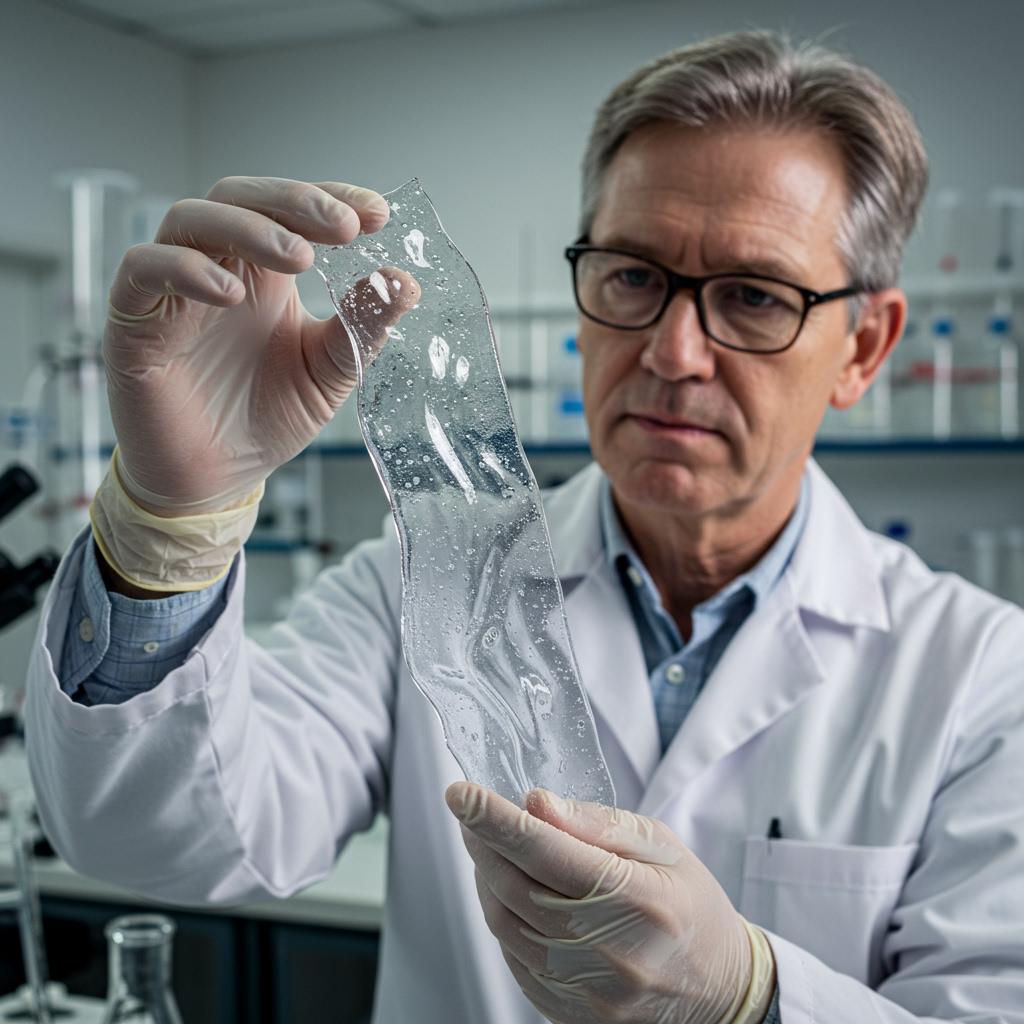How Chemists Are Making Plastic Eat Itself
 Scientists at UC San Diego develop innovative plastic that can break down itself using natural microbes.
Scientists at UC San Diego develop innovative plastic that can break down itself using natural microbes.
The future of plastic waste could be a world where plastics disappear on their own — thanks to clever chemistry and nature’s tiny helpers.
By Peter Teoh, Science Writer
Imagine a plastic bottle that doesn’t stick around for hundreds of years in a landfill or ocean. Instead, it breaks itself down naturally, disappearing in just a few months. This sounds like science fiction, but chemists today are making plastics that can literally “eat themselves” — a breakthrough that could change how we handle plastic pollution forever.
What’s the Problem with Plastic?
Plastic is everywhere — in bottles, shoes, watch bands, and packaging. It’s cheap, strong, and useful, but it lasts a very long time. Because most plastics don’t break down easily, they pile up in landfills and oceans, harming wildlife and ecosystems.
Enter Self-Recycling Plastics
Researchers at the University of California San Diego have created a kind of plastic that combines traditional materials with special microbes called spores. These spores are tiny life forms that stay dormant until conditions are right. When the plastic is thrown away in nature, the spores “wake up” and start breaking down the plastic from the inside out. This process can happen in compost or natural environments, fully degrading the plastic in about five months — much faster than regular plastics[1].
How Does This Work?
The magic lies in polyurethane, a common plastic used in items like shoe soles and watch bands. The scientists added microbial spores into the polyurethane during manufacturing. Normally, microbes can eat some plastics, but this method combines the plastic and microbes into one material.
When the plastic’s life is over and it’s exposed to natural environments, the spores activate and produce enzymes — special proteins that break chemical bonds in the plastic. This breaks the plastic down into simpler, harmless substances that nature can recycle. The best part? The plastic behaves just like normal plastic while you use it. It’s stretchy, durable, and elastic — it can stretch up to 15 times its original size without breaking[1].
Why Is This a Big Deal?
Traditional recycling has limits. Mechanical recycling (melting and remolding) often weakens plastic, and chemical recycling can be costly and energy-intensive[3]. Self-degrading plastics offer a new way to manage waste by making the plastic itself part of the solution.
Also, this process happens at natural temperatures — no need for super-hot machines like pyrolysis that require up to 500°C[2]. This means less energy use and less pollution.
Challenges and Future Directions
While promising, this technology is still new. Scientists are working to improve how fast and completely these plastics break down, and to apply the method to many kinds of plastics. Combining biodegradation with chemical and mechanical recycling could create a circular economy where plastics are reused infinitely with minimal waste[2].
What Can You Do?
Understanding these innovations helps us appreciate the power of chemistry and biology working together. Supporting sustainable materials, reducing plastic use, and recycling properly are still key steps everyone can take today.
Side Notes
- Spores are a tough, dormant form of microbes that can survive harsh conditions until they find a good environment to grow.
- Enzymes are biological molecules that speed up chemical reactions, like breaking down plastic chains.
- Polyurethane is a versatile plastic used in many everyday products for its durability and flexibility.
Trending Sidebar
Other Cool Plastic Innovations:
- Living Plastics: Materials that self-destruct when exposed to air or moisture[5].
- Chemical Recycling: Breaking plastics back into their building blocks to make new plastics[3].
- Upcycling: Turning plastic trash into valuable products like textiles or construction materials[3].
With ongoing research, the dream of a plastic-free planet — or at least a plastic that cleans up after itself — is closer than ever.
References
- Researchers at UC San Diego create ‘self-recycling’ plastic, KGTV 10 News (2024)
- Bottlenecks in biobased approaches to plastic degradation, Nature Communications (2024)
- How Does Technology Reduce Plastic Pollution? Sustainability Directory
- New ‘Living Plastic’ Self-Destructs Once It’s Thrown Away, ScienceAlert